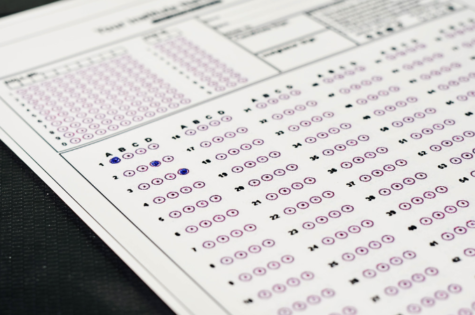Is “Edficiency” effective enough?
Kevin Jacobson (’19) schedules a Lancer Block session with a teacher using Edficiency. Edficiency was proposed so that teachers can meet with students that need help on assignments and to prevent too many students from attending one session.
If you are reading this as an upperclassman or teacher, picture two scenarios. In one, a student fumbles with his books after first hour, bounding out of class with only a minute passing time. Luckily, his third hour class is right next door! Quickly, he inputs his pin into the smartboard and sits down with a sigh of relief. In the second, more adverse scenario, a teacher is getting ready to sit back and have her cup of coffee during Lancer Block. Suddenly, a group of rambunctious juniors lazily sign in and gather noisily around a table, ruining the teacher’s time of peace and quiet.
These were both common scenarios that occurred with the old ID Lancer Block system. Now, the system has been replaced by Edificiency, a program that assigns students to a classroom either randomly, by a student’s request, or by a teacher’s request. As with anything, the Edificiency system has pros and cons, but it can be argued that the cons outweigh the pros.
Take the second example, where a teacher is unable to control a mob of boisterous students. Situations like these were not uncommon with the old Lancer Block system. Other issues included students forgetting to sign in to the system, forcing them to clear up the absence with the attendance office. Edificiency fixes these problems by (unless a gaggle of students remembers to request the same classroom) randomizing the classroom selection and having attendance taken in a standard method (headcount by the teacher). As a Sophomore student states, “It is more organized”.
Edificiency certainly has several disadvantages, and, I would argue, more disadvantages than advantages. Although many might argue against it, high school students are generally forgetful beings. The Edificiency system simply doesn’t address this idea as much as the ID system. Sure, students receive classroom reminders via email/text every morning, but they may usually forget to request the class they need to visit every single day. Should they forget to sign up and attend the required class anyway, an extra step is required to clear up their attendance.
John Boschek (‘21) states, “Most students don’t manually sign up for teachers, relying instead on the priorities list that seems to frequently put students in classes they don’t even have.” The website itself could use a more professional look and should be modified to accompany slow load times within the school. The block doesn’t even truly fix the problem from the second scenario, as sophomore Evan Bagwell claims, “People still go on their phones constantly and don’t use block properly.” Thus, Edificiency is not only largely inconvenient, but it also doesn’t quite solve a major problem of the ID system.
In the end, can students live with this system? Yes. The system has only been in use fo two months, and changes are always faced with reprehension. It could use some modifications to perform as well as the ID system and, although it may seem disadvantageous now, should eventually settle into Brookfield Central.
Sam is a junior at BCHS and is also involved in: Jazz 1 (Piano), Forensics, Tennis, Key Club. Sam is also a big fan of jazz music.
Tyro was recommended...











